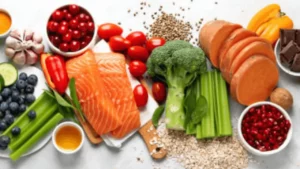Are you looking for a dietary approach that can help you manage your diabetes and lower your blood pressure? If so, you may want to consider the dash diet for diabetes. The dash diet for diabetes is a dietary pattern that was developed by the National Heart, Lung, and Blood Institute (NHLBI) in the United States to prevent and treat high blood pressure (hypertension).
The dash diet for diabetes can also help people with diabetes improve their insulin sensitivity, glycemic control, and weight management.
In this article, you will learn everything you need to know about the dash diet for diabetes, including its key aspects, benefits, components, meal plans, tips, and expert insights.
You will also find a chart that shows the Dash diet food pyramid, which is a visual guide that can help you follow the Dash diet and choose the right foods and portions for your daily and weekly meals. By the end of this article, you will have a better understanding of the dash diet for diabetes and how to follow it. Let’s get started!
Understanding Diabetes

Before we dive into the DASH diet, let’s first review some basics about diabetes and how it affects your body. Diabetes is a chronic condition that occurs when your body either does not produce enough insulin or does not use it properly.
Insulin is a hormone that helps your cells take up glucose (sugar) from your blood and use it for energy. When you have diabetes, your blood sugar levels can become too high or too low, which can cause serious health problems.
There are two main types of diabetes: type 1 and type 2. Type 1 diabetes is an autoimmune disease that destroys the cells in your pancreas that make insulin. People with type 1 diabetes need to take insulin injections or use an insulin pump to regulate their blood sugar levels.
Type 2 diabetes is more common and occurs when your body becomes resistant to insulin or does not produce enough of it. People with type 2 diabetes can manage their blood sugar levels with oral medications, insulin injections, or lifestyle changes.
The main goal of diabetes management is to keep your blood sugar levels within a healthy range and prevent complications such as nerve damage, kidney damage, eye damage, heart disease, and stroke.
One of the most important ways to achieve this goal is to follow a healthy diet that helps you control your blood sugar levels, lower your blood pressure, and maintain a healthy weight. This is where the DASH diet can help.
Overview of the DASH Diet
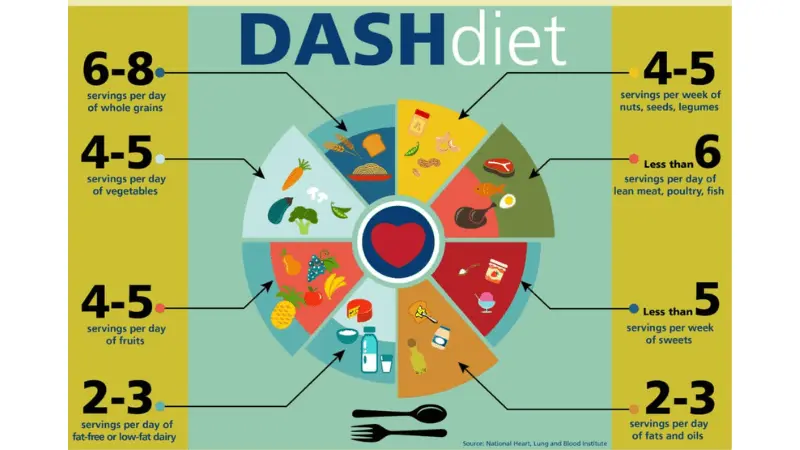
The DASH diet is a dietary pattern that was developed by the National Heart, Lung, and Blood Institute (NHLBI) in the United States to prevent and treat high blood pressure (hypertension). The DASH diet is based on scientific evidence that shows that eating certain foods can lower blood pressure and reduce the risk of cardiovascular disease.
The DASH diet is not a strict or rigid diet plan, but rather a general guideline for healthy eating. The DASH diet emphasizes eating more fruits, vegetables, whole grains, lean proteins, and low-fat dairy products, and eating less sodium, saturated fats, and refined sugars. The DASH diet also encourages portion control and moderation in alcohol consumption.
The DASH diet has two versions: the standard DASH diet and the lower sodium DASH diet. The standard DASH diet allows up to 2,300 milligrams (mg) of sodium per day, while the lower sodium DASH diet allows up to 1,500 mg of sodium per day.
The lower sodium DASH diet is recommended for people who have hypertension, diabetes, or chronic kidney disease, or who are older than 51 years.
The DASH diet is not specifically designed for people with diabetes, but it can be easily adapted to meet the dietary needs of individuals with diabetes.
The DASH diet can help people with diabetes control their blood sugar levels, lower their blood pressure, and manage their weight. In the next section, we will discuss the benefits of the DASH diet for diabetes in more detail.
Benefits of the DASH Diet for Diabetes
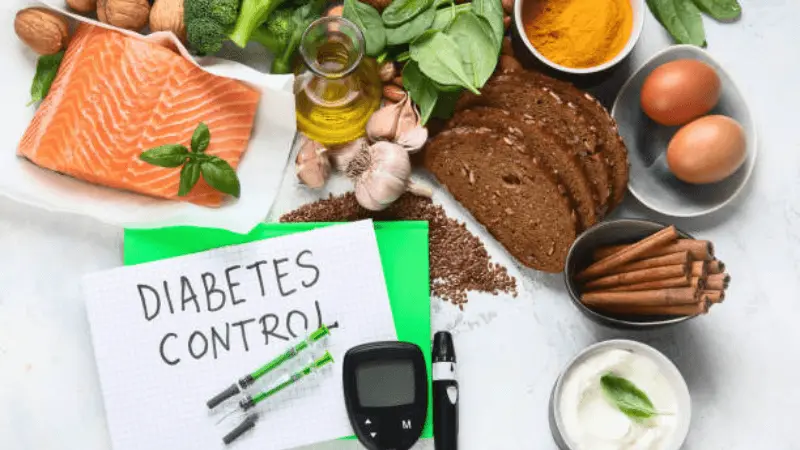
The DASH diet can offer several benefits for people with diabetes, especially for those who also have high blood pressure or are at risk of developing cardiovascular complications. Here are some of the main benefits of the DASH diet for diabetes:
Lowering blood pressure and reducing the risk of cardiovascular complications
High blood pressure is a common condition among people with diabetes, and it can increase the risk of heart attack, stroke, and kidney damage. The DASH diet can help lower blood pressure by reducing sodium intake and increasing potassium, calcium, and magnesium intake.
These minerals can help relax blood vessels and regulate blood pressure. Studies have shown that following the DASH diet can lower systolic blood pressure (the top number) by 8 to 14 mmHg and diastolic blood pressure (the bottom number) by 4 to 6 mmHg.
The DASH diet can also lower LDL (bad) cholesterol and triglycerides, which can improve blood flow and prevent plaque buildup in the arteries.
Impact on insulin sensitivity and glycemic control
Insulin sensitivity is the ability of your cells to respond to insulin and take up glucose from your blood. People with diabetes often have reduced insulin sensitivity, which can lead to high blood sugar levels and insulin resistance.
The DASH diet for diabetes can help improve insulin sensitivity by promoting a healthy weight, reducing inflammation, and providing adequate fiber and antioxidants. Fiber can help slow down the digestion and absorption of carbohydrates, which can prevent spikes and drops in blood sugar levels.
Antioxidants can help protect your cells from oxidative stress, which can impair insulin signaling and cause insulin resistance. Studies have shown that following the DASH diet can improve insulin sensitivity and lower fasting blood glucose and hemoglobin A1c (HbA1c) levels.
HbA1c is a measure of your average blood sugar levels over the past three months, and it is an important indicator of your diabetes control.
Positive effects on weight management
Weight management is another crucial aspect of diabetes management, as excess weight can worsen insulin resistance and increase the risk of complications.
The DASH diet can help you achieve and maintain a healthy weight by providing balanced and nutrient-dense meals that can keep you satisfied and energized.
It can also help you reduce your calorie intake by limiting foods that are high in fat, sugar, and sodium, and by encouraging portion control and moderation.
Studies have shown that following the DASH diet can result in modest weight loss and prevent weight regain in the long term.
The DASH Diet Food Pyramid
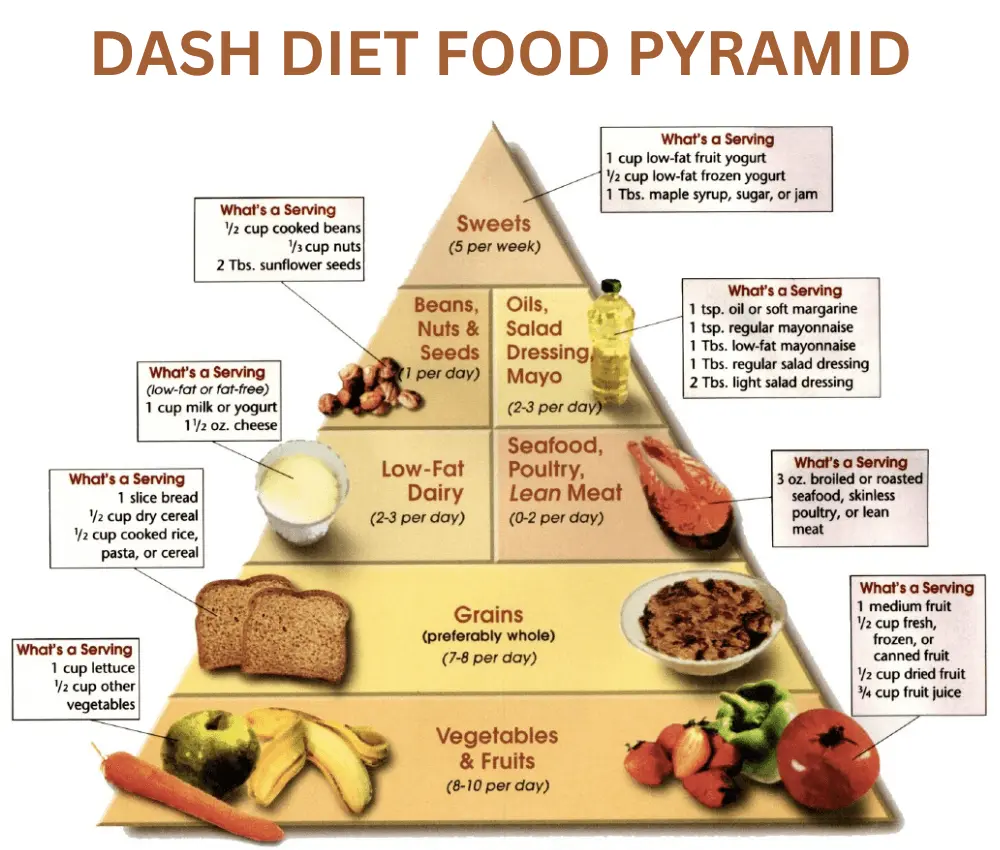
The DASH diet food pyramid is a visual guide that can help you follow the DASH diet and choose the right foods and portions for your daily and weekly meals.
The DASH diet food pyramid is based on the DASH diet eating plan, which recommends eating more fruits, vegetables, whole grains, low-fat dairy products, lean proteins, nuts, seeds, and legumes, and eating less sodium, saturated fats, and added sugars.
The DASH diet food pyramid shows the number of servings you should eat from each food group per day, depending on your calorie level. The DASH diet food pyramid also shows the size of one serving for each food group and gives examples of foods that belong to each food group.
The DASH diet food pyramid can help you plan your meals and snacks, make sure you get enough nutrients and fiber, and limit your sodium and fat intake.
The DASH diet food pyramid has six levels, with the largest and most important food groups at the bottom, and the smallest and least important food groups at the top. The six levels of the DASH diet food pyramid are:
Level 1: Grains
This is the largest and most important level of the DASH diet food pyramid, and it includes foods such as bread, cereal, rice, pasta, and crackers. You should eat 6 to 8 servings of grains per day, and at least half of them should be whole grains, such as whole-wheat bread, oatmeal, brown rice, and quinoa.
One serving of grains is equal to 1 slice of bread, 1 ounce of dry cereal, or 1/2 cup of cooked rice, pasta, or cereal.
Level 2: Vegetables
This is the second largest and most important level of the DASH diet food pyramid, and it includes foods such as lettuce, spinach, broccoli, carrots, tomatoes, and peppers.
You should eat 4 to 5 servings of vegetables per day, and try to eat a variety of colors and types. One serving of vegetables is equal to 1 cup of raw leafy vegetables, 1/2 cup of cooked or raw vegetables, or 6 ounces of vegetable juice.
Level 3: Fruits
This is the third largest and most important level of the DASH diet food pyramid, and it includes foods such as apples, bananas, oranges, grapes, and berries.
You should eat 4 to 5 servings of fruits per day, and try to eat fresh, frozen, or canned fruits without added sugar. One serving of fruit is equal to 1 medium fruit, 1/4 cup of dried fruit, 1/2 cup of fresh, frozen, or canned fruit, or 6 ounces of fruit juice.
Level 4: Low-fat or fat-free dairy products:
This is the fourth level of the DASH diet food pyramid, and it includes foods such as milk, yogurt, cheese, and cottage cheese.
You should eat 2 to 3 servings of low-fat or fat-free dairy products per day, and avoid full-fat dairy products, as they are high in saturated fat and cholesterol. One serving of low-fat or fat-free dairy products is equal to 1 cup of milk or yogurt, or 1 1/2 ounces of cheese.
Level 5: Lean meats, poultry, and fish
This is the fifth level of the DASH diet food pyramid, and it includes foods such as chicken, turkey, beef, pork, fish, and eggs. You should eat 6 ounces or less of lean meats, poultry, and fish per day, and choose lean cuts and skinless options.
You should also limit your intake of red meat and processed meat, such as bacon, sausage, and ham, as they are high in saturated fat and sodium. One serving of lean meats, poultry, and fish is equal to 1 ounce of cooked meat, poultry, or fish, or 1 egg.
Level 6: Nuts, seeds, and legumes:
This is the sixth level of the DASH diet food pyramid, and it includes foods such as almonds, walnuts, sunflower seeds, peanuts, beans, and lentils.
You should eat 4 to 5 servings of nuts, seeds, and legumes per week, and not per day, as they are high in calories and fat. However, they are also rich in protein, fiber, and healthy fats, and can help lower your cholesterol and blood pressure.
One serving of nuts, seeds, and legumes is equal to 1/3 cup of nuts, 2 tablespoons of seeds, or 1/2 cup of cooked beans or peas.
The DASH diet food pyramid also includes two additional food groups that are not part of the pyramid but are part of the DASH diet eating plan. These are:
Fats and oils:
These are foods such as butter, margarine, oil, mayonnaise, and salad dressing. You should eat 2 to 3 servings of fats and oils per day, and choose fats and oils that are low in saturated fat and trans fat, and high in monounsaturated fat and polyunsaturated fat.
These include olive oil, canola oil, sunflower oil, corn oil, soybean oil, peanut oil, sesame oil, flaxseed oil, and fish oil. You should also limit your intake of butter, lard, shortening, coconut oil, palm oil, and animal fats, as they are high in saturated fat and can raise your cholesterol levels and increase your risk of heart disease.
One serving of fats and oils is equal to 1 teaspoon of soft margarine, 1 teaspoon of vegetable oil, 1 tablespoon of mayonnaise, or 2 tablespoons of salad dressing.
Sweets and added sugars:
These are foods such as sugar, honey, syrup, candy, chocolate, cookies, cakes, pies, and ice cream. You should eat 5 or fewer servings of sweets and added sugars per week, and not per day, as they are high in calories and sugar, and can raise your blood sugar levels and increase your risk of diabetes and obesity.
One serving of sweets and added sugars is equal to 1 tablespoon of sugar, 1 tablespoon of jelly or jam, 1/2 cup of sorbet, or 1 cup of lemonade.
The DASH diet food pyramid is a helpful tool that can help you follow the DASH diet and manage your diabetes. By using the DASH diet food pyramid, you can plan your meals and snacks, and make sure you eat the right foods and portions for your health and well-being.
Key Components of the DASH Diet
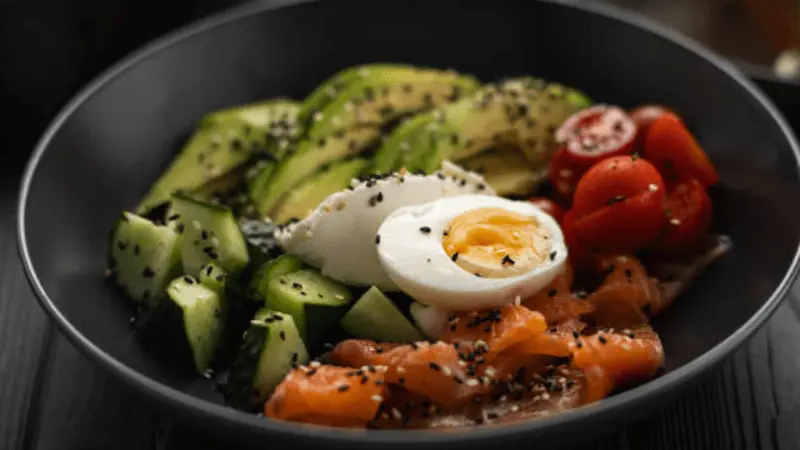
The DASH diet is based on eating a variety of foods that are rich in nutrients and low in sodium, saturated fats, and refined sugars. The DASH diet does not require you to count calories or follow strict rules, but rather to choose foods from different food groups according to the recommended servings per day.
The following table shows the daily servings and examples of foods for each food group in the standard DASH diet:
| Food Group | Servings per Day | Examples of One Serving |
|---|---|---|
| Grains | 6 to 8 | 1 slice of bread, 1 ounce of dry cereal, 1/2 cup of cooked rice, pasta, or cereal |
| Vegetables | 4 to 5 | 1 cup of raw leafy vegetables, 1/2 cup of cooked or raw vegetables, 6 ounces of vegetable juice |
| Fruits | 4 to 5 | 1 medium fruit, 1/4 cup of dried fruit, 1/2 cup of fresh, frozen, or canned fruit, 6 ounces of fruit juice |
| Low-fat or fat-free dairy products | 2 to 3 | 1 cup of milk or yogurt, 1 1/2 ounces of cheese |
| Lean meats, poultry, and fish | 6 or less | 1 ounce of cooked meat, poultry, or fish, 1 egg |
| Nuts, seeds, and legumes | 4 to 5 per week | 1/3 cup of nuts, 2 tablespoons of seeds, 1/2 cup of cooked legumes |
| Fats and oils | 2 to 3 | 1 teaspoon of soft margarine, 1 tablespoon of mayonnaise, 2 tablespoons of salad dressing |
| Sweets and added sugars | 5 or less per week | 1 tablespoon of sugar, 1 tablespoon of jelly or jam, 1/2 cup of sorbet, 1 cup of lemonade |
As you can see, the main difference between the two versions of the DASH diet is the amount of sodium allowed per day. The lower sodium DASH diet is more restrictive, but it can provide greater benefits for lowering blood pressure and improving diabetes control.
However, you can choose the version that suits your preferences and needs, and adjust it as you go along.
The DASH diet is not only about what you eat but also how you eat. Here are some general tips for following the DASH diet:
Eat regular meals and snacks:
Eating at consistent times can help you regulate your blood sugar levels and prevent overeating. Aim for three balanced meals and one or two healthy snacks per day. Avoid skipping meals or fasting, as this can cause your blood sugar levels to drop too low or spike too high.
Drink plenty of water:
Water is essential for keeping your body hydrated and flushing out excess sodium and toxins. Water can also help you feel full and curb your appetite. Aim for at least eight glasses of water per day, and limit your intake of sugary drinks, alcohol, and caffeine.
Use herbs and spices instead of salt:
Salt is the main source of sodium in your diet, and too much sodium can raise your blood pressure and damage your kidneys.
The DASH diet recommends limiting your sodium intake to no more than 2,300 mg or 1,500 mg per day, depending on the version you choose.
To reduce your salt intake, avoid adding salt to your food, and use herbs, spices, lemon juice, vinegar, or other flavorings instead. You can also choose low-sodium or sodium-free versions of foods and condiments, and read nutrition labels to check the sodium content of packaged foods.
Choose healthy fats and oils:
Fats and oils are an important part of your diet, as they provide energy, support cell function, and help absorb vitamins. However, not all fats and oils are created equal.
The DASH diet recommends choosing fats and oils that are low in saturated fats and trans fats, and high in monounsaturated fats and polyunsaturated fats.
These include olive oil, canola oil, sunflower oil, corn oil, soybean oil, peanut oil, sesame oil, flaxseed oil, and fish oil. You should also limit your intake of butter, lard, shortening, coconut oil, palm oil, and animal fats, as these are high in saturated fats and can raise your cholesterol levels and increase your risk of heart disease.
the DASH diet for diabetes: Sample Meal Plans
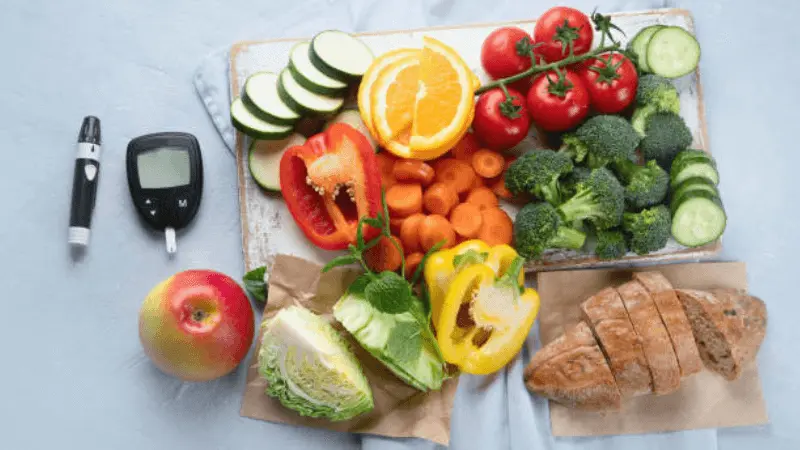
To give you an idea of what a typical day on the DASH diet for diabetes might look like, we have prepared some sample meal plans for you. These meal plans are based on the standard DASH diet with 2,300 mg of sodium per day, but you can adjust them according to your preferences and needs.
You can also use these meal plans as a template and substitute different foods from the same food group, as long as you follow the recommended servings and portions.
Breakfast
- 1 cup of cooked oatmeal with 1/4 cup of raisins and 2 tablespoons of chopped walnuts
- 1 cup of low-fat milk
- 1 medium banana
This breakfast provides about 520 calories, 18 grams of protein, 87 grams of carbohydrates, 14 grams of fat, 11 grams of fiber, and 240 mg of sodium. It also provides 4 servings of grains, 1 serving of fruits, 1 serving of low-fat dairy, and 1 serving of nuts, seeds, and legumes.
Lunch
- 2 slices of whole-wheat bread with 3 ounces of sliced turkey breast, 1 slice of low-fat cheese, lettuce, tomato, and mustard
- 1 cup of baby carrots with 2 tablespoons of hummus
- 1 cup of unsweetened iced tea with lemon
This lunch provides about 460 calories, 37 grams of protein, 54 grams of carbohydrates, 12 grams of fat, 11 grams of fiber, and 670 mg of sodium. It also provides 2 servings of grains, 2 servings of vegetables, 1 serving of lean meats, poultry, and fish, 1 serving of low-fat dairy, and 1 serving of fats and oils.
Snack
- 1/4 cup of unsalted mixed nuts
- 1 small apple
This snack provides about 250 calories, 6 grams of protein, 28 grams of carbohydrates, 15 grams of fat, 5 grams of fiber, and 5 mg of sodium. It also provides 1 serving of fruits and 1 serving of nuts, seeds, and legumes.
Dinner
- 3 ounces of grilled salmon with 2 teaspoons of olive oil and lemon juice
- 1/2 cup of brown rice
- 1 cup of steamed broccoli with 1 teaspoon of butter
- 1 cup of low-fat yogurt with 1/4 cup of fresh berries
This dinner provides about 590 calories, 40 grams of protein, 64 grams of carbohydrates, 20 grams of fat, 7 grams of fiber, and 320 mg of sodium. It also provides 1 serving of grains, 1 serving of vegetables, 1 serving of lean meats, poultry, and fish, 1 serving of low-fat dairy, 1 serving of fruits, and 1 serving of fats and oils.
Total
The total for the day is about 1,820 calories, 101 grams of protein, 233 grams of carbohydrates, 61 grams of fat, 34 grams of fiber, and 1,235 mg of sodium. It also provides 7 servings of grains, 4 servings of vegetables, 3 servings of fruits, 3 servings of low-fat dairy, 2 servings of lean meats, poultry, and fish, 2 servings of nuts, seeds, and legumes, and 3 servings of fats and oils.
Here is another example of what a typical day on the DASH diet for diabetes might look like. This meal plan is based on the lower sodium DASH diet with 1,500 mg of sodium per day, but you can adjust it according to your preferences and needs.
You can also use this meal plan as a template and substitute different foods from the same food group, as long as you follow the recommended servings and portions.
Breakfast
- 2 scrambled eggs with 1/4 cup of shredded low-fat cheese and 1/4 cup of diced tomatoes
- 2 slices of whole-wheat toast with 2 teaspoons of low-sodium peanut butter
- 1 cup of fresh orange juice
This breakfast provides about 520 calories, 28 grams of protein, 58 grams of carbohydrates, 20 grams of fat, 7 grams of fiber, and 440 mg of sodium. It also provides 2 servings of grains, 1 serving of vegetables, 1 serving of fruits, 2 servings of lean meats, poultry, and fish, 1 serving of low-fat dairy, and 1 serving of fats and oils.
Lunch
- 3 ounces of grilled chicken breast with 2 teaspoons of low-sodium barbecue sauce
- 1/2 cup of cooked quinoa
- 1 cup of mixed green salad with 2 tablespoons of low-fat dressing
- 1 cup of low-fat milk
This lunch provides about 460 calories, 40 grams of protein, 48 grams of carbohydrates, 12 grams of fat, 5 grams of fiber, and 360 mg of sodium. It also provides 1 serving of grains, 1 serving of vegetables, 1 serving of lean meats, poultry, and fish, 1 serving of low-fat dairy, and 1 serving of fats and oils.
Snack
- 1/4 cup of low-fat cottage cheese with 1/4 cup of fresh pineapple chunks
- 1 small whole-wheat pita bread with 2 tablespoons of hummus
This snack provides about 250 calories, 14 grams of protein, 36 grams of carbohydrates, 6 grams of fat, 4 grams of fiber, and 300 mg of sodium. It also provides 1 serving of grains, 1 serving of fruits, 1 serving of low-fat dairy, and 1 serving of nuts, seeds, and legumes.
Dinner
- 3 ounces of baked cod with 2 teaspoons of lemon juice and 1 teaspoon of olive oil
- 1/2 cup of mashed potatoes with 1 teaspoon of butter and 2 tablespoons of low-fat sour cream
- 1/2 cup of steamed green beans with 1 teaspoon of slivered almonds
- 1/2 cup of fresh strawberries with 2 tablespoons of whipped cream
This dinner provides about 440 calories, 30 grams of protein, 46 grams of carbohydrates, 16 grams of fat, 6 grams of fiber, and 400 mg of sodium. It also provides 1 serving of grains, 1 serving of vegetables, 1 serving of lean meats, poultry, and fish, 1 serving of fruits, 1 serving of nuts, seeds, and legumes, and 1 serving of fats and oils.
Total
The total for the day is about 1,670 calories, 112 grams of protein, 188 grams of carbohydrates, 54 grams of fat, 22 grams of fiber, and 1,500 mg of sodium. It also provides 5 servings of grains, 3 servings of vegetables, 3 servings of fruits, 3 servings of low-fat dairy, 3 servings of lean meats, poultry, and fish, 2 servings of nuts, seeds, and legumes, and 3 servings of fats and oils.
As you can see, these meal plans are balanced, nutritious, and satisfying. They also meet the dietary guidelines for people with diabetes, as they provide about 50% of calories from carbohydrates, 20% from protein, and 30% from fat.
They also provide adequate fiber, vitamins, minerals, and antioxidants. You can use these meal plans as a starting point and modify them according to your taste, budget, and availability of foods.
Tips for Adapting the DASH Diet to Diabetes Management
The DASH diet is a flexible and adaptable dietary approach that can suit different preferences and needs. However, if you have diabetes, you may need to make some adjustments to the DASH diet to optimize your blood sugar control and diabetes management. Here are some tips for adapting the DASH diet to your diabetes management plan:
1. Monitor your blood sugar levels
The DASH diet can help you lower your blood pressure and improve your insulin sensitivity, but it does not replace your diabetes medications or insulin therapy. You still need to monitor your blood sugar levels regularly and adjust your medications or insulin doses accordingly.
You should also consult your doctor or diabetes educator before making any changes to your diet or medications.
2. Count your carbohydrates
Carbohydrates are the main source of glucose in your blood, and they can affect your blood sugar levels more than any other nutrient. The DASH diet provides about 50% of calories from carbohydrates, which is within the recommended range for people with diabetes.
However, you still need to be aware of the amount and type of carbohydrates you eat, and how they affect your blood sugar levels.
You can use carbohydrate counting, glycemic index, or glycemic load to help you choose the best carbohydrates for your diabetes management. You should also aim for at least 25 grams of fiber per day, as fiber can help slow down the digestion and absorption of carbohydrates and prevent blood sugar spikes.
3. Choose lean proteins and healthy fats:
Proteins and fats can help you feel full and satisfied, and they can also help balance your blood sugar levels. The DASH diet provides about 20% of calories from protein and 30% from fat, which is also within the recommended range for people with diabetes.
However, you need to choose lean proteins and healthy fats that are low in saturated fats and cholesterol, and high in omega-3 fatty acids and monounsaturated fats. These include fish, poultry, eggs, nuts, seeds, legumes, olive oil, canola oil, and avocado.
You should also limit your intake of red meat, processed meat, butter, cheese, and fried foods, as these are high in saturated fats and can raise your cholesterol levels and increase your risk of heart disease.
4. Plan your meals and snacks
Planning your meals and snacks ahead of time can help you follow the DASH diet and manage your diabetes more easily.
You can use the DASH diet food pyramid, the DASH diet plate method, or the DASH diet meal plans as a guide to plan your meals and snacks. You can also use online tools, apps, or books to help you create your own DASH diet menus and recipes.
You should aim for three balanced meals and one or two healthy snacks per day, and avoid skipping meals or fasting. You should also try to eat at consistent times and space your meals and snacks evenly throughout the day. This can help you regulate your blood sugar levels and prevent overeating or under-eating.
FAQs
In this section, we will address some of the most common questions related to the DASH diet for diabetes. We hope that these FAQs will provide you with more clarity and confidence on how to follow the DASH diet and manage your diabetes effectively.
Q: How can I start the DASH diet for diabetes?
A: The DASH diet for diabetes is not a complicated or difficult diet to follow. You can start by making some simple changes to your current eating habits, such as reducing your salt intake, increasing your intake of fruits, vegetables, and whole grains, choosing lean proteins and low-fat dairy products, and limiting your intake of sweets and added sugars.
You can also use the DASH diet food pyramid, the DASH diet plate method, or the DASH diet meal plans as a guide to plan your meals and snacks. You can also consult your doctor or diabetes educator before starting the DASH diet, and ask them for advice and support.
Q: How can I monitor my sodium intake on the DASH diet for diabetes?
A: Sodium is a mineral that is essential for your body, but too much sodium can raise your blood pressure and damage your kidneys. The DASH diet for diabetes recommends limiting your sodium intake to no more than 2,300 mg or 1,500 mg per day, depending on the version you choose.
To monitor your sodium intake, you can use a food diary, an app, or a website to track the amount of sodium in the foods and beverages you consume. You can also read nutrition labels to check the sodium content of packaged foods and choose low-sodium or sodium-free versions of foods and condiments. You can also avoid adding salt to your food, and use herbs, spices, lemon juice, vinegar, or other flavorings instead.
Q: Can I eat out on the DASH diet for diabetes?
A: Yes, you can eat out on the DASH diet for diabetes, as long as you make smart choices and follow some tips. Here are some tips for eating out on the DASH diet for diabetes:
Plan ahead: Before you go out, check the menu online and look for dishes that are low in sodium, fat, and sugar, and high in fruits, vegetables, and whole grains. You can also call the restaurant and ask them about their ingredients and preparation methods, and request for any modifications or substitutions.
Order wisely: When you order, ask for your food to be prepared without salt, butter, cheese, or sauces, or ask for them on the side. You can also ask for smaller portions, or share your food with someone else. You can also order a salad, a soup, or a vegetable dish as an appetizer, and a fruit salad or a sorbet as a dessert.
Enjoy moderately: When you eat, enjoy your food slowly and savor every bite. You can also drink water, unsweetened tea, or low-fat milk instead of sugary drinks, alcohol, or caffeine. You can also limit your intake of bread, chips, or crackers, and avoid fried, creamy, or cheesy dishes.
Okay, I will continue to help you write your article about the DASH diet for diabetes. Here is the ninth part of the article:
Conclusion
The DASH diet for diabetes is a dietary approach that can help you lower your blood pressure, improve your insulin sensitivity, and manage your weight.
The DASH diet for diabetes is based on eating more fruits, vegetables, whole grains, lean proteins, and low-fat dairy products, and eating less sodium, saturated fats, and refined sugars. The DASH diet for diabetes is not a strict or rigid diet plan, but rather a general guideline for healthy eating that can be adapted to your preferences and needs.
The DASH diet for diabetes can offer several benefits for your health and well-being, such as reducing the risk of cardiovascular complications, enhancing your glycemic control, and supporting your mental health.
The DASH diet for diabetes can also be easy to follow, as it does not require counting calories or carbs, but rather choosing foods from different food groups according to the recommended servings and portions. The DASH diet for diabetes can also be customized to your individual dietary needs, such as gluten-free, vegetarian, or vegan.
If you want to start the DASH diet for diabetes, you can make some simple changes to your current eating habits, such as reducing your salt intake, increasing your intake of fruits, vegetables, and whole grains, choosing lean proteins and low-fat dairy products, and limiting your intake of sweets and added sugars.
You can also use the DASH diet food pyramid, the DASH diet plate method, or the DASH diet meal plans as a guide to plan your meals and snacks. You can also consult your doctor or diabetes educator before starting the DASH diet, and ask them for advice and support.
The DASH diet for diabetes is not a magic bullet, but a sustainable and healthy way of eating that can help you control your blood sugar levels and lower your blood pressure. The DASH diet for diabetes can also help you achieve and maintain a healthy weight, which is crucial for diabetes management.
The DASH diet for diabetes can also improve your quality of life, as it can reduce stress and anxiety, and enhance your mood and self-esteem.
We hope that this article has provided you with a comprehensive and informative guide on how the DASH diet for diabetes can be an effective tool for managing diabetes.
We hope that this article has also inspired you to try the DASH diet for diabetes and see the benefits for yourself. Remember, you are not alone in your diabetes journey, and you can always seek help and support from your doctor, diabetes educator, nutritionist, dietitian, or DASH diet coach.
We wish you all the best in your diabetes management and your DASH diet for diabetes. Thank you for reading. 😊



